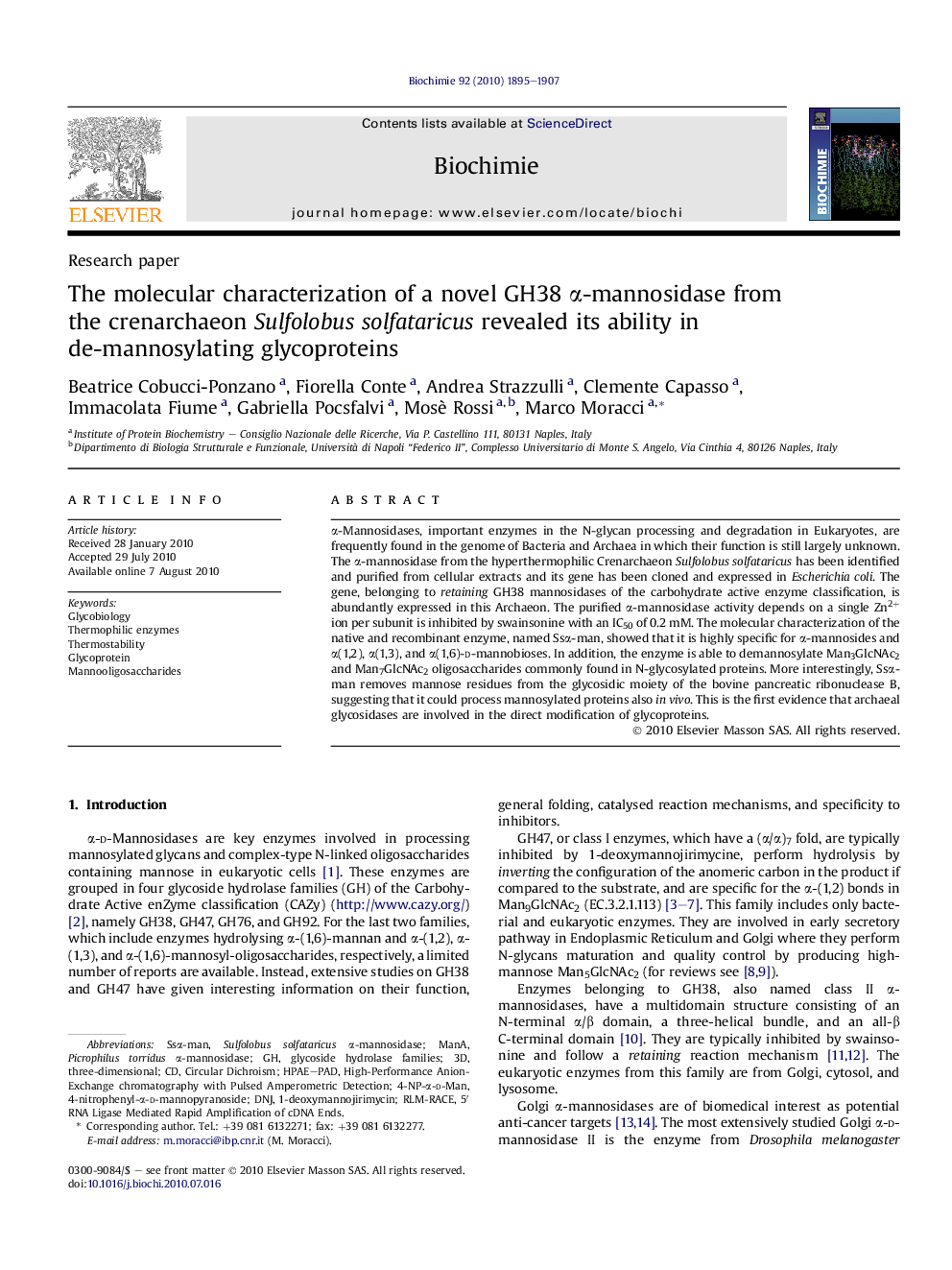| Article ID | Journal | Published Year | Pages | File Type |
|---|---|---|---|---|
| 1952463 | Biochimie | 2010 | 13 Pages |
α-Mannosidases, important enzymes in the N-glycan processing and degradation in Eukaryotes, are frequently found in the genome of Bacteria and Archaea in which their function is still largely unknown. The α-mannosidase from the hyperthermophilic Crenarchaeon Sulfolobus solfataricus has been identified and purified from cellular extracts and its gene has been cloned and expressed in Escherichia coli. The gene, belonging to retaining GH38 mannosidases of the carbohydrate active enzyme classification, is abundantly expressed in this Archaeon. The purified α-mannosidase activity depends on a single Zn2+ ion per subunit is inhibited by swainsonine with an IC50 of 0.2 mM. The molecular characterization of the native and recombinant enzyme, named Ssα-man, showed that it is highly specific for α-mannosides and α(1,2), α(1,3), and α(1,6)-d-mannobioses. In addition, the enzyme is able to demannosylate Man3GlcNAc2 and Man7GlcNAc2 oligosaccharides commonly found in N-glycosylated proteins. More interestingly, Ssα-man removes mannose residues from the glycosidic moiety of the bovine pancreatic ribonuclease B, suggesting that it could process mannosylated proteins also in vivo. This is the first evidence that archaeal glycosidases are involved in the direct modification of glycoproteins.
